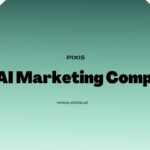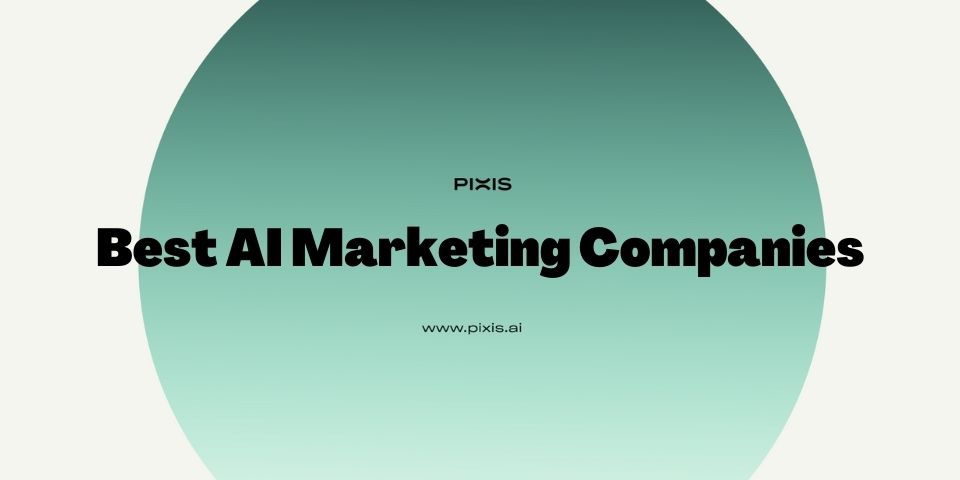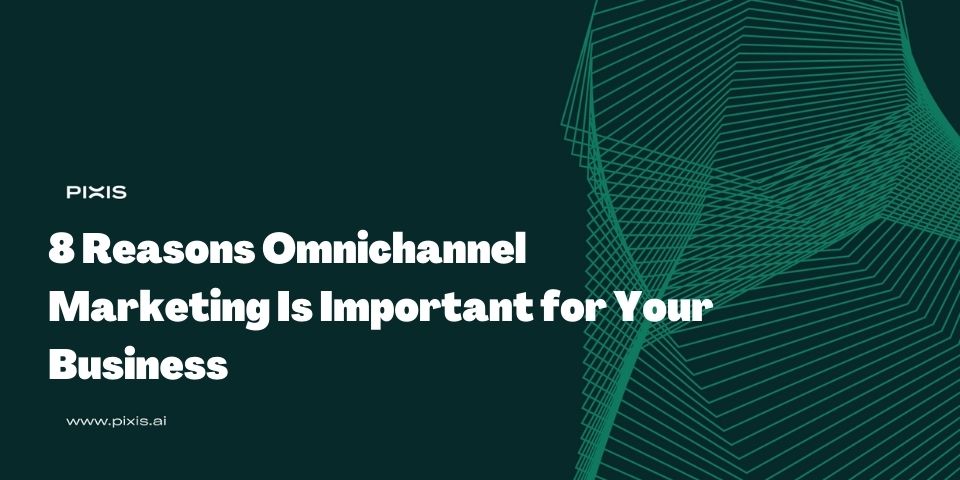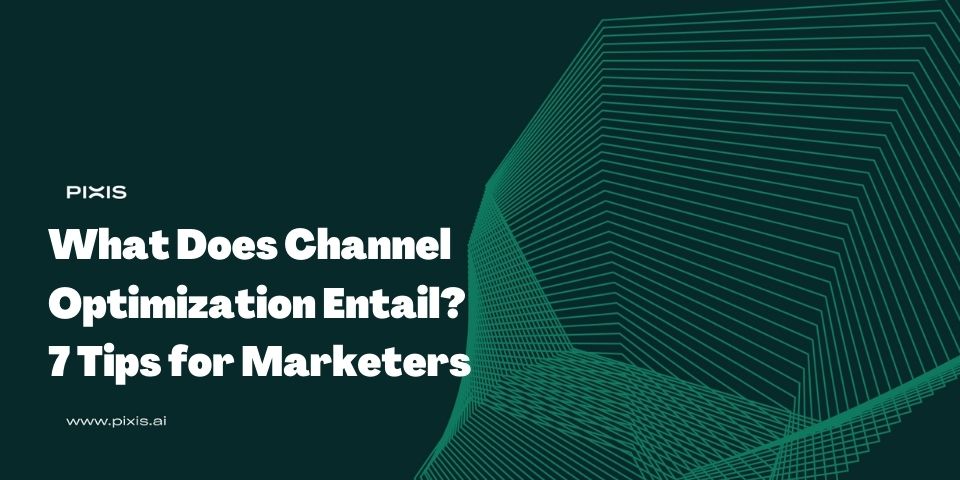How Is AI Transforming Digital Marketing? 10 Use Cases
AI is giving brands smarter ways to connect with customers, personalize experiences, and maximize results. What once required guesswork and manual effort — like predicting customer behavior, refining ad targeting, or crafting personalized content — can now be done with precision and efficiency.
AI can help teams work smarter to deliver the best message at the right time across the proper channels and scale your efforts without sacrificing quality.
In this article, we’ll break down 10 ways AI is transforming digital marketing, helping you stay competitive.
1. AI Delivers Hyper-Personalized Customer Experiences
Consumers expect brands to anticipate their needs, and AI makes this possible by analyzing data to deliver tailored recommendations and personalized marketing messages. Unlike traditional segmentation, AI refines personalization continuously and adjusts based on individual behavior.
AI gathers data from multiple sources—website visits, past purchases, social media interactions, and customer service chats—to create dynamic customer profiles. It then fine-tunes product recommendations, adapts website content, customizes email marketing, and optimizes ad targeting.
As many as 81% of customers prefer businesses that personalize their experience, while AI-driven suggestions lead to higher order values and stronger customer retention. Roughly 42% of marketers who use AI report better personalization.
Brands that use AI also see higher Net Promoter Scores (NPS), reinforcing the connection between tailored experiences and long-term loyalty.
For example, Zalando, a Scandinavian fashion brand, uses AI to refine its shopping experience. Zalando’s AI-powered shopping assistant shows just how far personalization can go. Instead of relying on filters or product categories, shoppers can ask natural, open-ended questions like, “What should I wear to a winter wedding in Stockholm?” The assistant interprets context — like the occasion, season, and location — to deliver curated, relevant outfit suggestions. For B2C marketers, this kind of intuitive, real-time personalization is a glimpse into the future: one where AI tailors the customer journey based on need and intent, not just past clicks.
2. Predictive Analytics: Anticipating Customer Needs
Predictive analytics plays an important role in understanding consumer behavior. It uses historical data, statistical algorithms, and machine learning to identify future outcomes.
Predictive analytics transforms inventory operations through:
- Demand forecasting by analyzing historical sales data, market trends, and external factors
- Stock optimization that determines ideal inventory levels
- Seasonal adjustments that account for cyclical variations
- Supplier management that identifies potential disruptions
For targeted marketing, predictive analytics delivers:
- Customer segmentation based on behavior, preferences, and demographics
- Personalized recommendations derived from purchase history
- Churn prediction that identifies at-risk customers
- Campaign optimization through performance analysis
- Cross-selling and upselling opportunities identified based on product affinities
- Building lookalike audiences based on existing customer profiles
- User acquisition optimization by identifying the most effective channels and messages
Levi’s use of predictive analytics highlights how brands can stay one step ahead of customer demand. By partnering with Google Cloud, Levi’s began aggregating data from online browsing behavior, in-store purchases, retail partners, and its loyalty program, spanning over 50,000 global distribution points. With machine learning models running daily, the brand can now detect emerging purchase trends across more than 100 countries in near real time.
One standout insight? Baggy, relaxed-fit styles weren’t just trending among Gen Z, they were resonating across age groups and genders. This shift informed everything from Levi’s “Live Loose” campaign to supply chain decisions and future product design. For B2C marketers, Levi’s approach shows how predictive analytics reveals where demand is heading, allowing brands to act quickly and confidently market.
3. AI Builds on Content Creation and Optimization
AI quickly identifies trending topics and content gaps through content intelligence while offering natural language generation for initial drafts, including ad copy. It expedites the content workflow, from generating topic ideas to checking grammar, readability, and SEO optimization.
AI-optimized content is prone to higher engagement rates, and websites using AI for content creation usually experience an increase in organic traffic.
Research by Buffer also found that social media posts created with AI have higher median engagement rates compared to human-only content. This was true across Facebook, LinkedIn, Pinterest, Threads, TikTok, Twitter, and YouTube.
4. AI Transforms Advertising with Smarter Ad Buying
Traditional digital advertising often relies on manual bidding and audience selection, which can be inefficient. AI-powered programmatic ad buying automates this process, using data to determine the best ad placements, timing, and audience targeting.
AI-driven real-time bidding (RTB) allows advertisers to bid on individual impressions through automated auctions. Instead of bulk ad purchases, AI evaluates each opportunity based on user behavior, demographics, and browsing history, ensuring brands only pay for valuable impressions.
AI also refines ad targeting through:
- Behavioral and contextual targeting: Matching ads to user activity and relevant content.
- Geotargeting and dayparting: Adjusting ads based on location and peak engagement times.
- Retargeting: Re-engaging previous visitors to boost conversions.
Here’s a hypothetical example to illustrate how AI helps with ad buying. A company called TechGadget Inc. launches a new smartwatch and uses AI to identify three customer segments:
- Tech enthusiasts engaging with gadget blogs and YouTube reviews.
- Fitness buffs active on Instagram and fitness apps.
- Business professionals browsing LinkedIn and business news sites.
Instead of a blanket strategy, AI customizes ad placements for each group. It increases bids on Instagram when fitness buffs engage most, prioritizes YouTube ads for tech enthusiasts, and targets business professionals on LinkedIn during commuting hours. AI also tests multiple ad variations, refining visuals, copy, and CTAs to maximize engagement.
Learn more: 40 AI Prompts for Marketing Teams
5. AI-Powered Social Media Monitoring and Sentiment Analysis
Social media moves fast, and keeping up with brand mentions, customer feedback, and emerging trends can be overwhelming. AI-powered social media monitoring simplifies this by tracking conversations about your brand, competitors, and industry across platforms. More importantly, sentiment analysis detects whether audience reactions are positive, negative, or neutral, providing insights into public perception.
AI-driven sentiment analysis acts as an early warning system, identifying negative patterns early. Brands can proactively address complaints, adjust messaging, or respond to concerns before they spiral. Tracking sentiment trends over time also helps brands measure brand health and assess how major announcements or campaigns are received.
Sentiment analysis also helps optimize marketing efforts by identifying what resonates with audiences. Brands can tweak campaigns based on audience reactions so that messaging stays relevant and impactful. AI also uncovers potential brand advocates — loyal customers who consistently engage positively — helping brands nurture influencer partnerships and community engagement. Additionally, sentiment insights inform product development by highlighting common praises or complaints.
6. AI Optimizes Email Marketing Campaigns
AI improves personalized email communication at scale by analyzing customer data, including purchase history, browsing behavior, engagement patterns, and demographics. This analysis uncovers patterns and preferences, allowing for relevant content creation.
Beyond optimizing send times and crafting personalized subject lines to boost open rates, AI uses predictive analytics to determine the ideal moments for engagement so messages reach recipients when they’re most receptive. AI-powered tools can generate compelling copy variations, segment audiences, and automate A/B testing to refine messaging strategies. AI-driven email campaigns can also include product recommendations, abandoned cart reminders, and predictive discounts tailored to individual buying behaviors, making email marketing more personalized.
Advanced AI applications can facilitate email validation, identifying and removing invalid or low-quality email addresses. By analyzing customer feedback and sentiment, AI helps marketers fine-tune their content to better resonate with their audience. Additionally, AI can predict customer churn and automate re-engagement campaigns, proactively retaining valuable customers.
7. Improvements in Visual Content with AI-Generated Creative
AI allows for personalized creative at scale and creates unique visuals tailored to individual preferences and behaviors. These visuals are less expensive than photo shoots or stock imagery libraries.
AI-generated imagery also creates culturally relevant visuals adapted to different markets and contexts, resonating with specific demographic targets across age groups, genders, and cultures. The technology supports language localization and analyzes the emotional impact of visuals on particular audience segments, creating imagery with stronger emotional resonance.
Available techniques include text-to-image conversion, style transfer applications, GAN creations, and image-to-image transformations.
For example, a global sportswear brand might implement AI-driven visual content by:
- Inputting customer data, including age, location, purchases, and browsing history
- Analyzing this data to determine relevant products, styles, and imagery
- Generating custom visuals showing:
- Products in settings relevant to each user’s location
- Models matching the user’s demographics
- Activity scenes aligned with the user’s interests
This approach creates thousands of targeted, personalized visuals, increasing relevance across diverse audience segments.
8. Simplifying Dynamic Pricing Strategies with AI
AI algorithms analyze competitor pricing, supply and demand, consumer behavior, historical sales, and seasonal trends to predict optimal pricing.
This dynamic pricing enables rapid responses to market changes, allowing strategic undercutting without unsustainable price wars. AI-driven pricing helps businesses maximize profits by adjusting prices, raising them during peak demand and spotting small opportunities to optimize revenue while keeping prices within set limits.
For example, an electronics retailer uses AI pricing during Black Friday and Cyber Monday. The system:
- Monitors competitor prices every 5 minutes across 10,000+ products
- Adjusts prices within predefined ranges to maintain competitiveness
- Updates flash sale prices every 30 seconds
- Anticipates demand through social media trends and search data
- Generates personalized discounts based on customer segments
AI simplifies dynamic pricing by continuously analyzing real-time data, from competitor rates to consumer behavior, allowing brands to adjust prices strategically, stay competitive, and maximize revenue without sacrificing margin.
9. Reducing Customer Churn with AI-Powered Predictions
Customer retention is essential for long-term success in subscription businesses, and AI makes it easier to identify warning signs before customers leave. AI detects subtle disengagement patterns by analyzing purchase history, service interactions, website activity, and social media behavior.
Advanced machine learning models assess churn indicators like declining product usage, increased service complaints, longer gaps between purchases, and shifts in spending habits. These models assign a churn probability score to each customer, allowing brands to intervene before it’s too late. AI also explains churn risks, helping marketers understand why customers are losing interest rather than just flagging at-risk individuals.
Instead of reacting after customers leave, AI helps brands take proactive steps to keep them engaged. Strategies include:
- Personalized outreach: Sending tailored messages that address specific concerns.
- Retention incentives: Offering discounts or loyalty perks for high-value, at-risk customers.
- Product improvements: Using churn data to refine features and address common pain points.
- Customer education: Providing tips, tutorials, or exclusive content to help users get more value from the product.
- Proactive customer support: Identifying and resolving potential frustrations.
10. How AI Helps Brands Stay Ahead of Competitors
There are AI tools for scanning customer reviews, social media conversations, and online trends to uncover what people love (or dislike) about products, helping brands refine their messaging and offerings. These tools can also track competitor activity like pricing changes, product launches, and marketing strategies, so businesses can respond strategically.
By analyzing patents, research publications, and emerging consumer behaviors, AI gives brands a head start on what’s coming next, whether it’s a rising product category or a shift in customer preferences.
Imagine an online electronics retailer using AI to track competitor pricing. When a rival drops the price of wireless headphones by 15%, AI instantly alerts the team and suggests the best response:
- Match the discount on older models where it makes sense.
- Keep premium models at full price while emphasizing unique features.
- Offer product bundles (like a charging case or adapter) to add value without lowering prices.
Instead of automatically slashing prices, AI helps brands make smarter pricing decisions that keep them competitive without cutting into profits.







